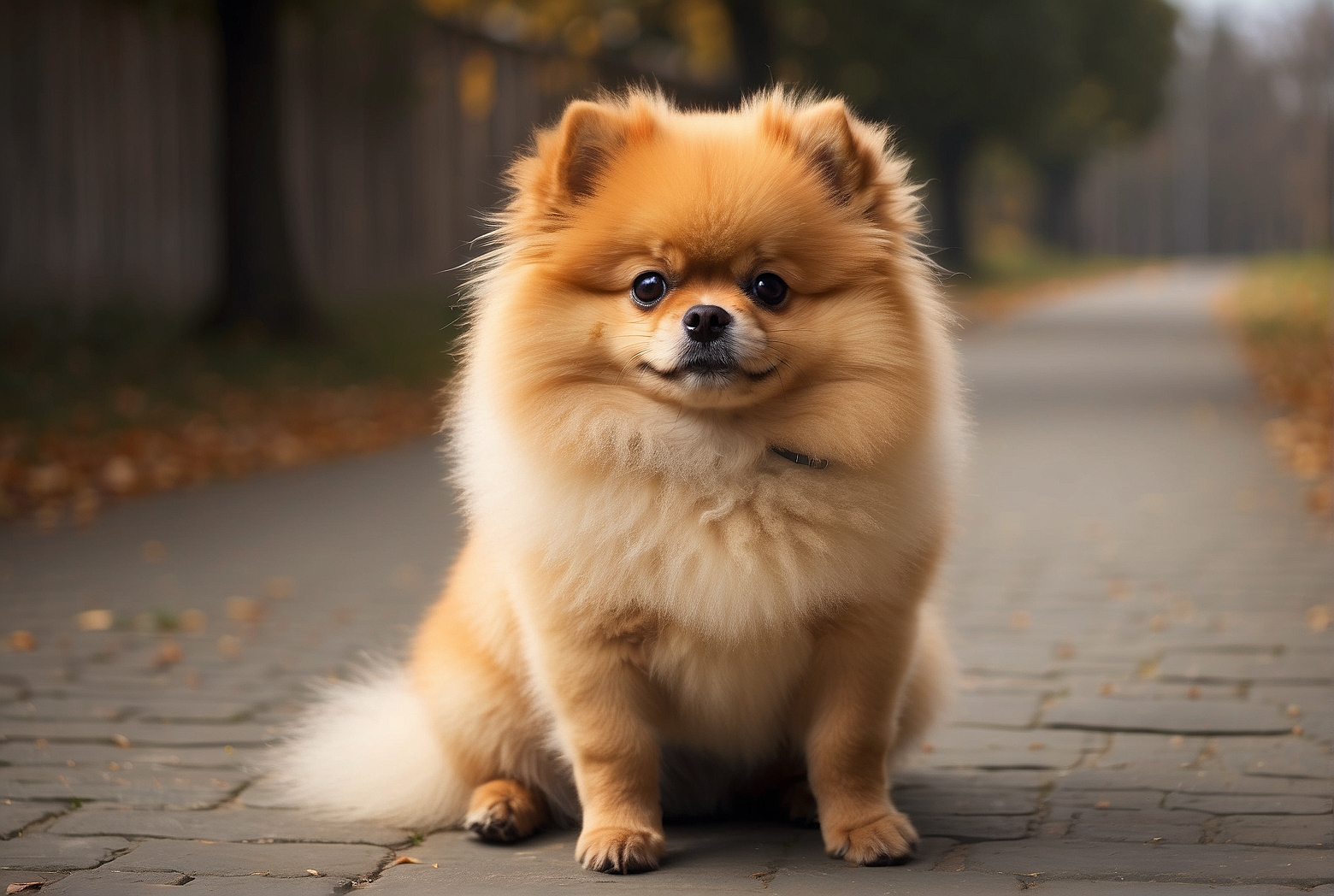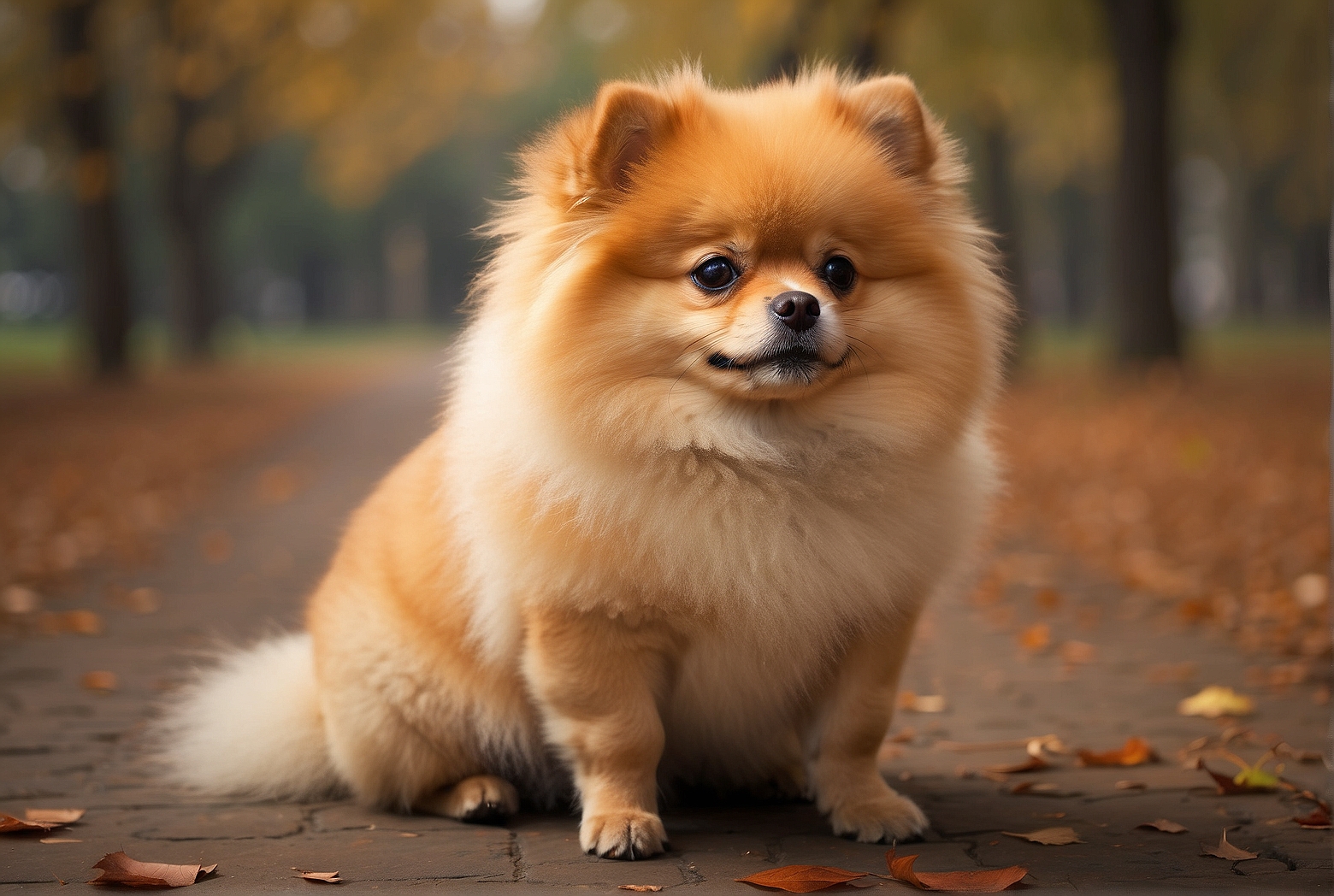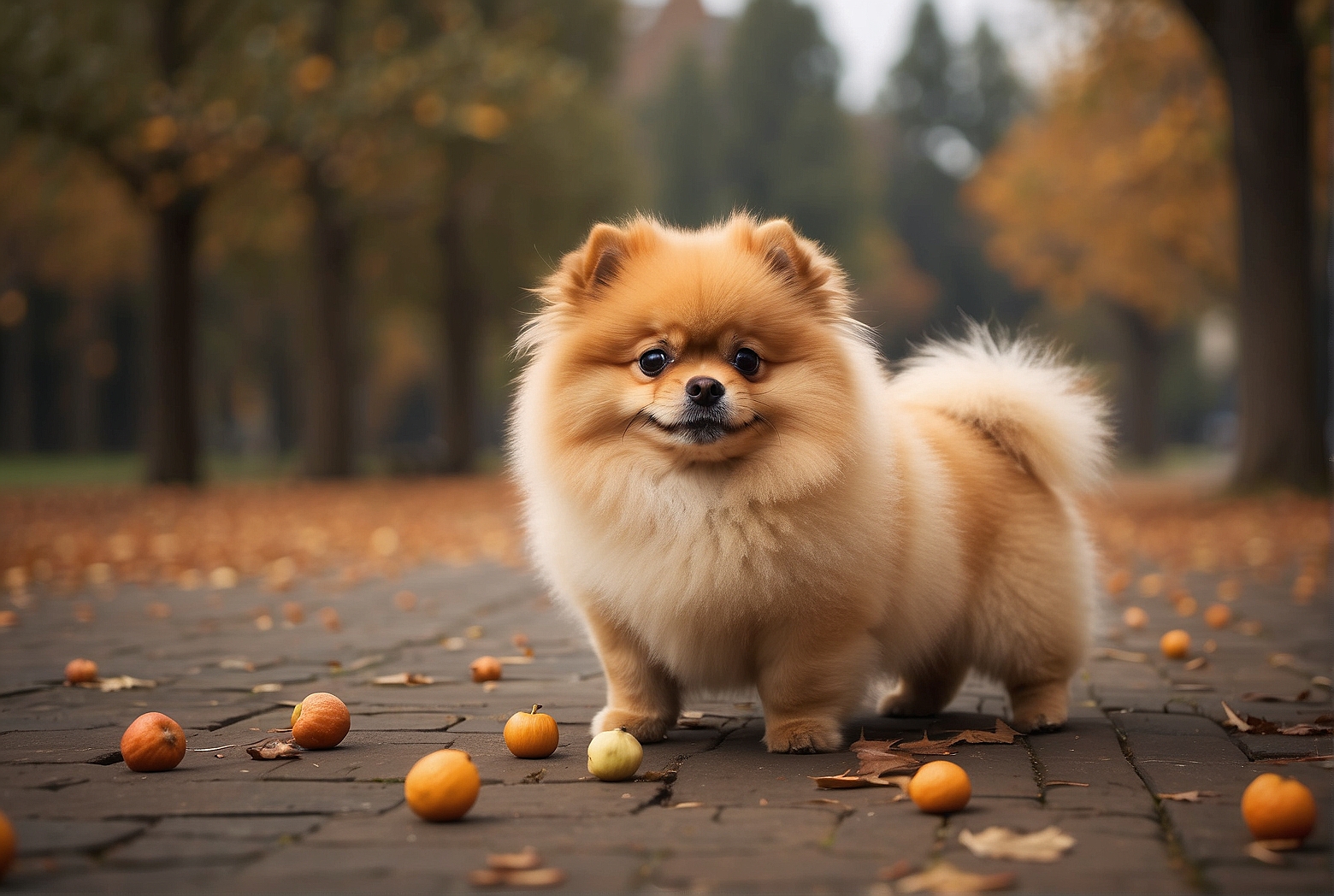If you’ve ever wondered about the size of a Pomeranian, you’re in the right place. In this article, we’ll explore just how big these adorable dogs can get. While they may be small in stature, Pomeranians have a surprising range when it comes to their size. From tiny teacup Pomeranians to standard-sized ones, we’ll uncover the different factors that influence their growth and provide you with fascinating insights into this beloved breed. So, let’s embark on this delightful journey to discover just how big a Pomeranian can truly be.
History and Background of the Pomeranian
Ancestry and Origin of the Pomeranian
The Pomeranian, also known as the Pom, is a small breed of dog that originated in the Pomerania region, which is now divided between Germany and Poland. It is believed to be descended from larger Spitz-type dogs, which were used for herding and pulling sleds. Over time, the Pomeranian was selectively bred down in size to create the adorable and compact dog we know today.
Development and Popularity of the Pomeranian Breed
The Pomeranian breed gained popularity during the 18th century when Queen Victoria of England took an interest in these little dogs. She played a significant role in refining the breed and popularizing it among the nobility. Queen Victoria’s passion for the breed led to the development of smaller Pomeranians through careful breeding. The Pomeranian then spread throughout Europe and eventually made its way to other parts of the world, capturing the hearts of dog lovers everywhere.
Pomeranian Breed Standards
Physical Characteristics of the Pomeranian
The Pomeranian is a compact and sturdy little dog with a wedge-shaped head, almond-shaped eyes, and erect ears. They have a thick double coat that comes in various colors, including orange, black, white, cream, blue, and chocolate, among others. Their tails are plumed, and they have a distinctive fox-like expression that adds to their appeal.
Official Size and Weight Standards
According to the official breed standards, adult Pomeranians should generally weigh between three and seven pounds. However, this doesn’t mean that Pomeranians cannot be slightly smaller or larger, as variations can occur within the breed. It’s essential to remember that size alone does not determine the quality or health of a Pomeranian; temperament and overall well-being are equally important.
Color and Coat Variations
Pomeranians come in a wide range of coat colors and patterns. The American Kennel Club (AKC) recognizes over twenty color variations for Pomeranians, from the most common orange and black to more unique shades like lavender and merle. Additionally, Pomeranians can have different coat types, including a thick double coat or a smoother single coat. Coat variations are not necessarily indicative of size differences, so it’s crucial to consider other factors when evaluating a Pomeranian.

Pomeranian Growth Stages
Newborn Pomeranians
Newborn Pomeranians are incredibly small, weighing only a few ounces at birth. They are born with closed eyes and ears and are entirely dependent on their mother for warmth, nourishment, and care. During this stage, it’s essential to provide a safe and warm environment for the mother and her puppies, ensuring that they receive proper nutrition and veterinary care to support their growth.
Puppy Stage
As Pomeranian puppies grow, they become more active and curious about their surroundings. They go through a rapid growth phase during this stage, with their size and weight increasing significantly. Puppies require a balanced diet, socialization, and regular veterinary check-ups to ensure they develop into healthy and well-adjusted adult Pomeranians.
Adolescence and Young Adult Stage
During adolescence and young adulthood, Pomeranians continue to grow both physically and mentally. Their adult traits start to emerge, and they become more independent. This stage is an important time for continued training, socialization, and providing opportunities for mental stimulation to help them develop into well-behaved and happy companions.
Full Adult Size and Appearance
Pomeranians generally reach their full adult size and appearance by the age of one. At this stage, they have developed their characteristic double coat, and their adult weight and height have stabilized. It’s crucial to maintain their health and wellness through a balanced diet, exercise, grooming, and regular veterinary care.
Seniors and Aging Pomeranians
As Pomeranians enter their senior years, they may experience age-related changes, such as decreased mobility and changes in vision or hearing. They may also develop certain health issues that are more common in older dogs. It’s essential to provide them with appropriate care, including regular vet check-ups, a nutritious diet, and accommodations for their changing needs.
Factors Influencing the Size of Pomeranians
Genetics and Hereditary Traits
Genetics play a significant role in determining the size of a Pomeranian. The genes inherited from their parents and ancestors can influence their growth and development. Responsible breeders focus on breeding within the breed standard to maintain the desired size and characteristics of Pomeranians.

Diet and Nutrition
Proper nutrition is crucial for the healthy growth of a Pomeranian. Feeding them a balanced diet that meets their nutritional needs is essential for their development and maintaining an ideal weight. Overfeeding or underfeeding can negatively impact their growth and potentially lead to health issues.
Health and Exercise
Regular exercise is essential for maintaining a healthy weight and overall well-being in Pomeranians. Lack of exercise or excessive sedentary behavior can contribute to weight gain and health problems. Moreover, poor health can hinder growth or result in stunted growth and developmental delays.
Spaying or Neutering
Spaying or neutering a Pomeranian can potentially affect their size, especially if done at an early age. The removal of reproductive organs can impact hormone levels and metabolism, which may influence growth patterns. It’s essential to consult with a veterinarian to understand the potential effects of spaying or neutering on a Pomeranian’s growth.
Accurate Breeder Information and Lineage
Reputable breeders who have thorough knowledge of their Pomeranians’ lineage can provide reliable information about their expected size. By researching the lineage and selecting a responsible breeder who consistently produces Pomeranians within the appropriate size range, you can have a better idea of what to expect in terms of size and ensure you are getting a healthy and well-bred dog.
Common Pomeranian Sizes
Toy Pomeranians
Toy Pomeranians refer to Pomeranians that are on the smaller side of the breed standard. They typically weigh between three and five pounds, making them the smallest size category. Toy Pomeranians often have the same temperament, intelligence, and overall characteristics as their larger counterparts.
Miniature Pomeranians
Miniature Pomeranians fall within the standard size range but tend to be slightly smaller than average. They usually weigh between five and seven pounds. While still considered smaller than standard Pomeranians, they are not as tiny as Toy Pomeranians.
Standard Pomeranians
Standard Pomeranians encompass the majority of the breed and meet the official size and weight standards set by the breed’s respective kennel club. They typically weigh between six and seven pounds. Standard Pomeranians are just as affectionate, playful, and fearless as their smaller counterparts.
Teacup Pomeranians
Teacup Pomeranians are unnaturally small Pomeranians that fall well below the breed standard in terms of size. They are usually marketed as extremely tiny dogs and often weigh less than three pounds. It’s important to note that the teacup label does not denote a separate breed, but rather a marketing term used by breeders.
Throwback Pomeranians
Throwback Pomeranians, also sometimes referred to as “Bigger Poms,” are Pomeranians that are larger than the breed standard. They may exhibit traits more similar to their larger Spitz ancestors. While not common, some Pomeranians may grow larger than the average size range, weighing eight pounds or more.
Average Size and Weight of a Pomeranian
Male Pomeranian Size
Male Pomeranians typically fall within the standard size range of six to seven pounds. However, variations can occur, and some males may be slightly smaller or larger. It’s essential to consider other factors, such as genetics and health, alongside size when evaluating a male Pomeranian.
Female Pomeranian Size
Female Pomeranians, like their male counterparts, generally weigh between six and seven pounds. However, there can be slight size differences between individual females due to genetics and other factors. It’s important to remember that size alone does not determine the quality or health of a female Pomeranian.
Ideal Weight Range for Pomeranians
The ideal weight range for Pomeranians is generally considered to be between three and seven pounds. Pomeranians within this range are generally healthy and have the appropriate body condition for their size. Dogs that fall significantly below or above this range may be at an increased risk of health issues.
Size Comparison with Other Dog Breeds
In comparison to other dog breeds, Pomeranians are relatively small. They are significantly smaller than larger breeds like Great Danes or Saint Bernards but may be similar in size to other small breeds such as Chihuahuas or Yorkshire Terriers. Pomeranians are often chosen for their compact size and portability.
Growth Chart and Typical Size Milestones
Pomeranian Size at Birth
At birth, Pomeranian puppies are incredibly small, weighing only a few ounces. They are fragile and entirely dependent on their mother for warmth and nourishment. During this stage, their eyes and ears are closed, and their primary focus is on growing stronger and developing basic motor skills.
Size at 8 Weeks
By eight weeks of age, Pomeranian puppies have typically grown quite a bit and have doubled or even tripled their birth weight. At this stage, they should display more coordinated movement and curiosity about their surroundings.
Size at 6 Months
By six months of age, Pomeranians are well into their adolescence and have grown significantly. They are more active and energetic, displaying the characteristic traits of the breed. While still not fully mature, they have developed their adult coat and are approaching their full size.
Size at 1 Year
By one year of age, most Pomeranians have reached their full adult size and appearance. They have achieved their adult height, weight, and coat characteristics. At this stage, their growth has largely stabilized, and they have transitioned into adulthood.
Full Adult Size
Pomeranians generally reach their full adult size by the age of one. While some minor growth can occur beyond this point, there are typically no significant changes in size or appearance. It’s important to continue providing proper care, nutrition, and regular veterinary check-ups to ensure their ongoing health and well-being.
Health Considerations for Pomeranians
Potential Health Issues Associated with Smaller Size
While Pomeranians are generally healthy dogs, their small size can make them more susceptible to certain health issues. They may be more prone to dental problems, patellar luxation, collapsing trachea, and obesity. Regular veterinary care and a preventive approach are crucial for maintaining their health and addressing potential issues early.
Obesity and Weight-Related Problems
The Pomeranian’s small size makes it easier for them to gain weight if not properly managed. Obesity can lead to numerous health problems, including joint issues, heart disease, and diabetes. It’s essential to provide a balanced diet, portion control, and regular exercise to maintain a healthy weight for your Pomeranian.
Growth-related Conditions
Pomeranians, like many small breeds, can be prone to growth-related conditions such as hip dysplasia and Legg-Calve-Perthes disease. These conditions can cause pain, lameness, and affect the dog’s mobility. Regular veterinary check-ups and early detection are essential in managing these conditions effectively.
Regular Vet Check-ups
Regular veterinary check-ups are crucial for monitoring your Pomeranian’s health, identifying any potential issues early on, and ensuring they receive proper care and vaccinations. Veterinarians can perform examinations, conduct necessary tests, and provide guidance regarding your Pomeranian’s specific health needs.
Proper Care and Attention
Providing proper care and attention to your Pomeranian is essential for their overall well-being. This includes maintaining a clean and safe environment, offering them a balanced diet, exercising them regularly, ensuring they receive necessary vaccinations, grooming them appropriately, and providing plenty of love and social interaction.
Caring for Your Growing Pomeranian
Balanced Nutrition for Optimal Growth
Feeding your growing Pomeranian a balanced and nutritious diet is vital for their development and overall health. Choose a high-quality dog food that is appropriate for their age, size, and specific needs. Consult with your veterinarian for recommendations regarding portion sizes and the frequency of meals to ensure your Pomeranian is getting the proper nutrients for optimal growth.
Exercise and Physical Activity
Regular exercise is essential for keeping your Pomeranian healthy and maintaining an appropriate weight. Engage in daily walks, play sessions, and interactive games that provide physical and mental stimulation. However, be mindful not to overexert your Pomeranian, as excessive exercise can strain their delicate bones and joints.
Training and Socialization
Training and socialization are crucial aspects of caring for a Pomeranian. Start training from an early age to establish good behaviors and manners. Socialize your Pomeranian by exposing them to various people, animals, and environments, ensuring they become well-rounded and confident dogs. Positive reinforcement methods and patience are key to successful training and socialization.
Grooming and Coat Maintenance
Pomeranians have a dense double coat that requires regular grooming and maintenance. Brush their coat at least a few times a week to prevent matting and tangles, paying extra attention to the thicker undercoat during shedding seasons. Regular bathing, nail trimming, and dental care are also essential for keeping your Pomeranian looking and feeling their best.
Regular Veterinary Care
Regular veterinary care is essential for the health and well-being of your Pomeranian. Schedule routine check-ups, vaccinations, and preventative treatments for parasites. Consult with your veterinarian about recommended dental care, spaying or neutering, and any specific health concerns related to your Pomeranian’s size and breed.
Conclusion
Summary of Pomeranian Size
Pomeranians come in different sizes, with variations occurring within the breed. Toy Pomeranians are the smallest, while standard Pomeranians fall within the official size range. Teacup Pomeranians are smaller than the breed standard and are often bred for extreme size, but it’s important to be cautious of potential health issues associated with their unnaturally small size. Mixes or throwback Pomeranians may be larger than the average size range but can still possess the same delightful characteristics.
Importance of Responsible Ownership
No matter the size, responsible ownership is crucial for the health and well-being of any Pomeranian. This includes providing proper nutrition, regular exercise, training, socialization, grooming, and veterinary care. Responsible ownership also extends to selecting a reputable breeder who prioritizes the health and temperament of their Pomeranians.
Appreciating Pomeranians of All Sizes
Pomeranians, regardless of their size, are cherished companions and family pets. Their delightful personality, intelligence, and loyalty make them well-suited for various households. While size can be an interesting characteristic to consider, it should not overshadow the importance of health, temperament, and responsible breeding practices. Ultimately, appreciating Pomeranians of all sizes ensures that their charm and companionship continue to be enjoyed by dog lovers worldwide.
